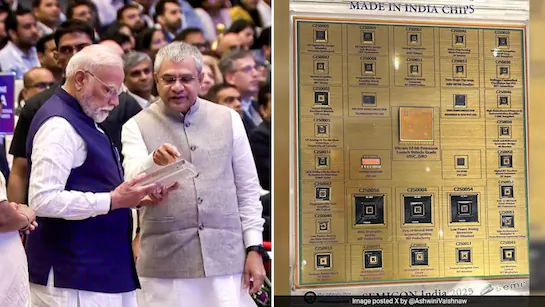Let Markets Determine Deeptech Leaders: Insights from Semicon India 2025
Introduction
At Semicon India 2025, a pivotal discussion emerged: Should India let markets decide its deeptech champions? Investors and experts urged the government to focus on national priorities rather than picking specific technologies. This approach could potentially maximize the impact of the proposed $12 billion Research Development and Innovation (RDI) Fund.
The Case for Market-Driven Selection
Investor Insights
Sriram Viswanathan, Founding Managing Partner at Celesta Capital, emphasized the importance of setting direction and designing incentives rather than dictating technical choices. He stated, “The government is not a picker of winners and losers… let the industry do it.” This perspective suggests that allowing industries to innovate freely could lead to more effective outcomes.
Lessons from China
TK Kurien from Premji Invest highlighted China’s model of fostering “extreme competition at the bottom” and supporting companies that prove themselves. This strategy could be a game-changer for India, enabling the country to develop world-class companies with strong supply-chain depth.
Strategic Focus and Clear Goals

Ruthless Focus
Viswanathan cautioned against spreading resources too thinly across numerous initiatives. Instead, he advocated for concentrating efforts on a few key areas, stating, “Pick five areas and put your muscle behind it.” This focused approach could lead to significant advancements in targeted sectors.
Collaboration and Execution
To make the Rs 1-lakh-crore plan effective, the panel stressed the need for collaboration between investors, corporates, and the state. The India Deep Tech Investment Alliance (IDTA) aims to facilitate this by providing feedback to the government, ensuring that incentives are aligned with industry needs.
The Role of the India Deep Tech Investment Alliance
Unified Engagement
Celesta and seven other VC/PE firms recently formed the IDTA, committing over $1 billion in the next decade. This alliance will provide a unified channel for engagement with government entities, aligning with official goals and coordinating co-investments.
Removing Bottlenecks
By channeling industry feedback to the government, the IDTA aims to remove bottlenecks and deploy capital swiftly. This initiative could accelerate the growth of deeptech startups and enhance India’s position in the global tech landscape.
Implications for India’s Deeptech Landscape
Potential for Global Leadership
With a focused strategy and market-driven selection, Indian startups have the potential to become global leaders. The CEO of the India Semiconductor Mission even suggested that Indian startups could become the next Qualcomm, highlighting the immense possibilities.
Challenges and Considerations
While the approach is promising, it requires careful execution and monitoring. Setting clear targets and measuring outcomes will be crucial. The government’s role should be to facilitate and support rather than control, ensuring that the best ideas and technologies thrive.
Conclusion
The insights from Semicon India 2025 underscore the importance of letting markets determine deeptech leaders. By focusing on national priorities and fostering collaboration, India can unlock its potential in the tech industry. The path forward involves strategic focus, clear goals, and a commitment to supporting innovation.







